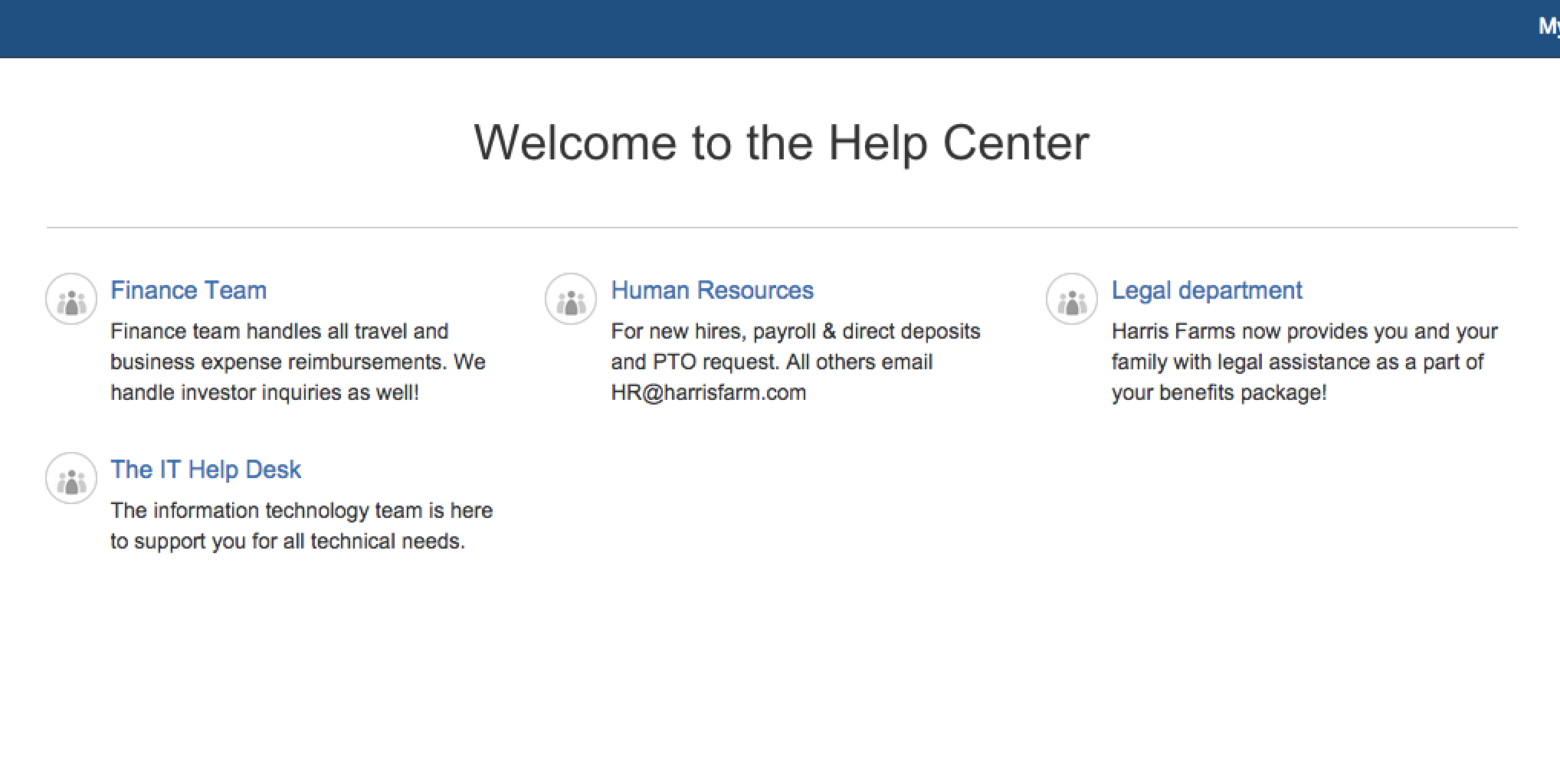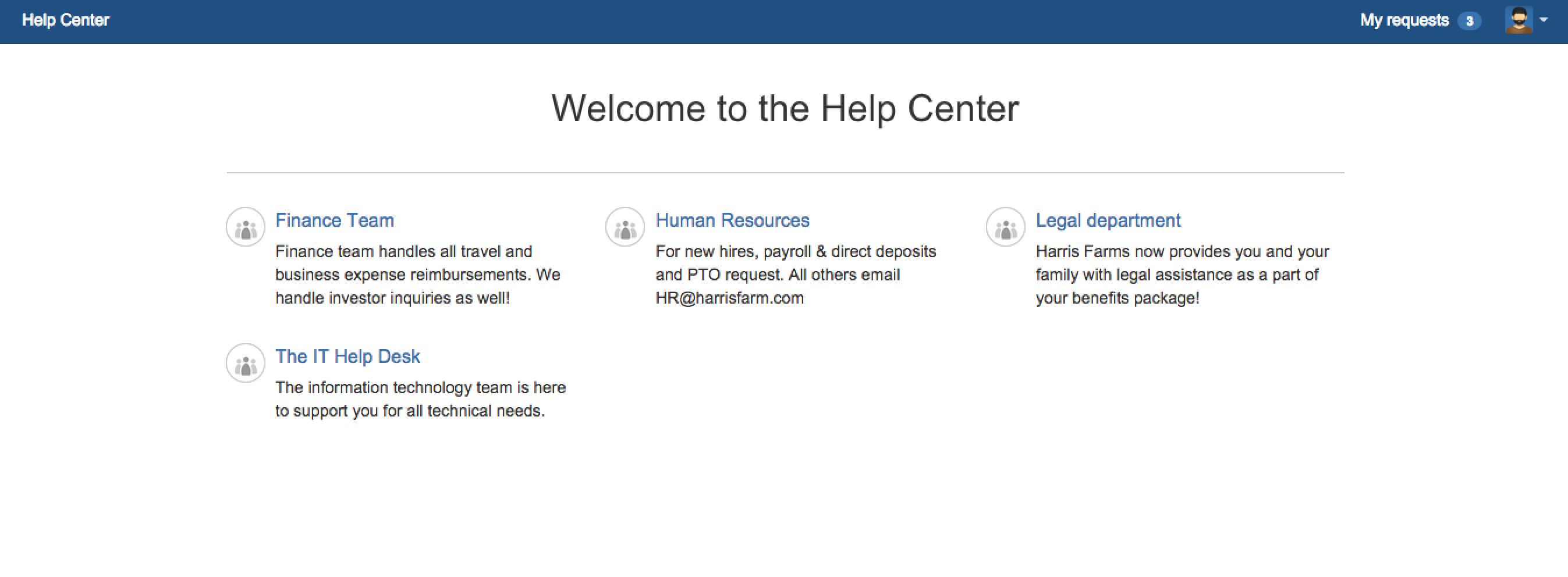A service desk for every team: introduction
Have you ever used Google to search for something you didn’t know?
Or deposited a check at an ATM (or even better yet, deposited it through your mobile phone while wearing your pajamas)?
Today, self-service is becoming an expectation, not a luxury – and that should be the case if you have a question at work, too.
Have you ever used Google to search for something you didn’t know?
Or deposited a check at an ATM (or even better yet, deposited it through your mobile phone while wearing your pajamas)?
Today, self-service is becoming an expectation, not a luxury – and that should be the case if you have a question at work, too.
The Help Desk Institute (HDI) recently did research and found that:
50% of organizations have adopted or are planning to provide service outside of IT.*
50% is a huge number, and this trend is only growing as more and more businesses realize the benefits of adopting a service tool across the business.
In this blog series, we’ll be talking about how business teams like HR, finance, and legal can benefit from the same productivity improvements that IT teams get by using a service tool such as Jira Service Desk.
But first, some background on service outside of IT
The trend to adopt service management outside of IT is growing.
But what are the most popular service desks across the business? According to HDI, here are the most popular use cases of service management outside of IT (and % of those who have adopted a particular kind of service outside of IT):
- Customer service / support (73%)
- Facilities (38%)
- Human resources (38%)
- Training (30%)
- Finance (24%)
Who’s leading the charge?
The same research found that IT and CIOs are helping push the trend (53%) versus business unit leaders asking for it directly (35%).* IT and CIOs are the closest to understanding how service management can benefit the business – and they’re leading the charge.
Service is a new way of working
What does the word “service” mean to you?
Many people equate “service” solely with IT or customer service. But “service” means to provide services. All internal business teams provide services to everyone within the business. HR teams need to help with onboarding new hires or explaining how benefits work. Accounting teams need to provide paychecks to their employees and ensure that employees get their expenses repaid. Legal teams need to provide forms and contracts for vendors. The list goes on and on.
Today, many organizations use email to collect these “requests.” However, email is time consuming and hard to use for capturing work.
A service tool like Jira Service Desk can provide:
- An easy-to-use portal for anyone in the business to submit requests
- An internal “google” that instantly provides answers to commonly asked questions
- A way for teams to automatically track requests and work without having to do it themselves
We practice what we preach: How our teams use Jira Service Desk
At Atlassian, nearly all of our business teams use Jira Service Desk as a way to manage and prioritize requests for help. At our last count, we had over 50 service desks for 1,500 employees. Here are some of the more common ones:
- HR
- Finance
- Legal
- Kudos (a way for our employees to award each other with gifts for doing a great job)
- Foundation (allows Atlassians to advance humanity through software by giving donations and signing up for volunteer time)
- Marketing
It’s not just Atlassian – Twitter has over 100 service desks!
We’ll be going into more detail about each of these service desks in the next few weeks, including a spotlight on Atlassian’s HR, legal, and finance service desks.
Watch this blog – and in the meantime, comment below if you have any stories about how your company uses service outside of IT.
*HDI, “Service management: not just for IT anymore,” https://www.atlassian.com/help-desk/service-manangement-not-just-for-it

